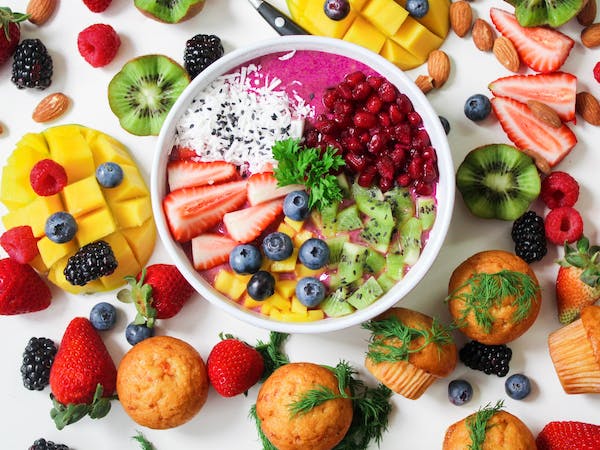With the rise of obesity in North America, many people have chosen to take control of their lives and take a good look at the foods they eat. Since then, new food fads have come and gone. How to understand?
Snacking
Followers eat on the go, on the street, and in public transportation, with the majority of their meals consisting of prepared foods. In France, where this way of living has become quite fashionable, lunchtime has shrunk from one hour and forty minutes to less than 30 minutes in the last 20 years. This tendency is evident in fast food restaurant visits throughout North America.
Its offspring, the “Meal to Go”, the “Dinner to Go” and the “Gourmet to Go”, consist of prepared items intended to compose a regular or gourmet meal that can be eaten anywhere, even on the street. Some companies south of the border have understood the importance of this new way of doing business and are delivering packages containing all the necessary ingredients to your home.
Ingredient-rich
This expanding trend is based on the consumer’s understanding of product quality, origin, and processing method of the food they consume. This tendency is related to the international movement known as “slow food,” which originated in Italy.
Raw foodism
Also known as “living food”, raw foodism consists of eating uncooked food, often from organic producers. The followers believe that cooking food eliminates a large part of the vitamins and trace elements present in its natural state. There are three types of rawists: rawists-vegetarians, rawists-vegans, and rawists-carnivores, the latter adding meat, raw or almost, to their diet.
Instinctonutrition
Instinctonutrition is a method of eating practiced by some raw foodists. It consists of preparing raw food while avoiding the addition of artificial ingredients that could alter the consistency, flavor, and smell of the food. Here, food is neither seasoned nor mixed
The hedonistic dimension
This one refers more to gastronomy. Its followers are ready to pay more for more aesthetic products, combining conviviality, taste, and the pleasure of healthy eating. This trend is growing among 50-year-olds, mainly among the more affluent.
Food rations
Concerned about consuming healthy and sufficient food for the proper functioning of their body, many people opt for a balanced diet. They rely on a daily intake of animal proteins, fats, ions, water, cellulose, and a calculated consumption of cereals, fruits, vegetables, starchy foods, and sweet products.
Functional diet
Some people, on the advice of a doctor, adopt functional eating. This trend aims to restore health by correcting specific biological and biochemical abnormalities through the therapeutic properties of foods. Scientists are searching hard for all sorts of possibilities to create functional foods, and there are a huge number of scientific papers on this topic. In the scientific publication Journal of Functional Foods, some essay help to better understand the topic. In North America, this trend is developing rapidly among those who fear, or are fighting, cancer.
Others are looking for energy. The industry has therefore developed products that meet these expectations. In addition to the well-known energy bar and similar drinks, there is now a yogurt that stimulates the brain.
Anti-allergy products
This growing market – $6 billion in 2012 – relies on the preparation of foods that exclude the use of allergenic components such as gluten, lactose, eggs, peanuts, and seafood.
Organic food
Organic food is the most popular of the current major trends. It’s only been around for a few years, but it’s gaining popularity among health-conscious people. It is founded on three fundamental tenets and bans almost all foods. The first significant principle in terms of the earth is using soil-adapted seeds and avoiding chemical fertilizers and pesticides. The other two are founded on consumer respect by providing healthy and controlled products with minimal (or no) harmful effects and superior nutritious content.
Localovorism
Localovorism (or buying local) encourages the consumption of food produced within 200 km of one’s hometown. Openly ecological, this way of doing things also benefits the economy by favoring local producers.
Vegetarianism
Perhaps the best known of current dietary trends, vegetarianism excludes all consumption of animal flesh. Vegetarians prefer fruits, vegetables, and grains and certain animal products such as dairy products, eggs, and honey. This trend is divided into several sub-trends, including lacto-vegetarianism, which excludes eggs but not dairy products; ovo-vegetarianism, which includes eggs but not dairy products; semi-vegetarianism, which eliminates only red meats; and veganism, a sub-trend that consists of avoiding all products of animal origin or tested on animals, such as leather, cosmetics, wool and beeswax
Veganism
Stricter than vegetarianism, veganism excludes from the diet all animal flesh (meat, fish, crustaceans, mollusks), all derived products (gelatin, cosmetics), as well as all elements produced by animals (eggs, milk, honey, etc.). Vegans will be satisfied with fruits, vegetables, legumes, grains, seeds. They will also consume mushrooms, bacteria, and substances that do not come from the living world, such as salt and calcium.
Diet-conscious individuals are confronted with a plethora of continuously shifting trends. It is now up to them to make an educated decision based on their physical and physiological requirements.
